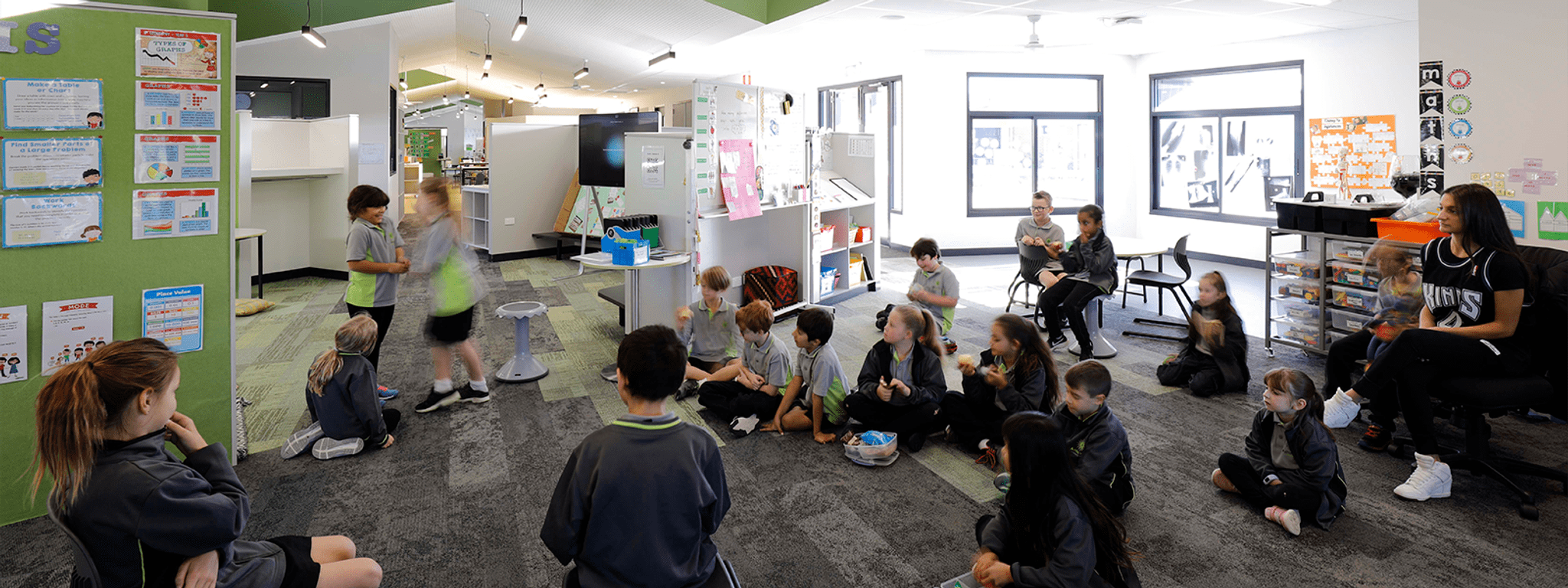We’re building innovative new spaces for students to learn, play and grow in. New flexible ‘learning communities’ are designed to cater to a wider variety of learning styles.
We design the new spaces with principals, teachers, educational experts and architects. While the new spaces may be unfamiliar, they cater for the learning needs and abilities of all students.
Learning communities are larger buildings made up of multi-purpose spaces. Educators can use them in different ways to educate students. This might mean using doors, movable walls or furniture to create barriers.
While we design these spaces for schools, the school leadership team and teachers decide their use and function.
Explicit instruction space
Teachers use these spaces when they want an enclosed area shut off from outside noise. They can also be opened up to supplement a collaborative learning environment.
Meeting rooms
Meeting rooms can be used when groups need a quiet environment. This might include activities such as quiet study, team meetings and focused reading and writing.
Small group spaces
Small group spaces can be used differently according to the age, developmental stage and interests of the children.
A Prep learning community might use it in a more hands-on way. Year 6 students might set-up the space up with games tables.
Satellite studio lab
Satellite studios support art and science activities. They are often designed with access to covered outdoor areas. They also provide general support to all other areas of the curriculum that might require a setting to stimulate curiosity or conduct wet or messy activities.
Covered outdoor learning areas
Covered outdoor learning areas provide an opportunity for students to take learning out of the classroom. We can connect them to a satellite studio lab to create an ideal indoor/outdoor learning space. These zones can also be used for large group gatherings.
Learning nooks
Learning nooks provide a calm space with soft furnishings., For example, children can use beanbags to ‘shape’ their own space for quiet learning.
Collaboration areas
Collaboration areas support student-centred learning investigations. They also function as breakout spaces for formal learning areas. These areas can also include small niche spaces where children can retreat to, while remaining a part of the general learning activities.
Amenities
We design learning communities with centrally located toilets to provide easy access for students, and easy supervision for teachers during learning periods and at lunch and recess times.
Central amenities can be available without opening the rest of the building during lunch and recess. This is also handy for making toilets available for after-hours use without needing to leave whole buildings unlocked.
Explore more about school building design
Updated


